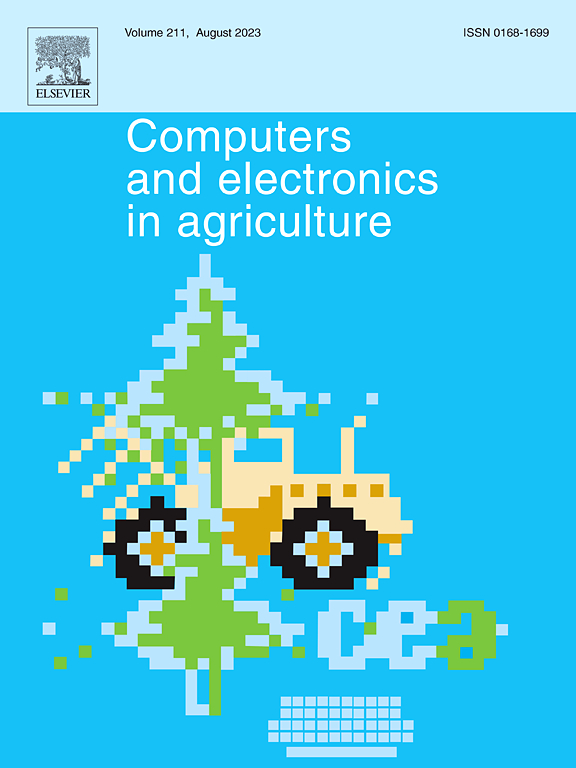MOS sensor array based on multi-modal data weighted composite membership optimization for rice blast detection in symptomless stage
IF 7.7
1区 农林科学
Q1 AGRICULTURE, MULTIDISCIPLINARY
引用次数: 0
Abstract
Rice blast is one of the most destructive diseases affecting rice crops globally, known for its rapid spread and significant damage. The initial phenotypic symptoms are challenging to identify, and conventional field detection methods frequently do not fulfill the necessary detection requirements. We have developed an innovative detection method for the symptomless stage of rice blast disease, utilizing metal oxide semiconductor (MOS) gas sensors in conjunction with multimodal data optimization techniques. The distinctive fingerprint characteristics of volatile organic compounds (VOCs) emitted by rice were systematically collected. Principal Component Analysis (PCA) was utilized to identify the relevant feature sensors. A significant correlation was observed between the responses of the sensors and the physiological indicators of rice leaves, including chlorophyll and hydrogen peroxide concentrations, with a correlation coefficient of r = -0.91. The criteria importance through intercriteria correlation (CRITIC) weighting method, along with the gaussian membership function (GMF), has been employed to analyze and integrate sensor feature data, thereby effectively differentiating the characteristics associated with the symptomless stage of rice blast. The processed features were utilized to train, calibrate, and validate a model based on Support Vector Machine (SVM) technology, culminating in the development of the CRITIC-GMF-SVM framework for the precise detection of rice blast during its symptomless stage. This model achieved an impressive accuracy rate of 98.37 % for the symptomless stage, significantly outperforming conventional on-site detection techniques. This method offers significant advantages in the early detection and precise monitoring of rice blast disease. Moreover, its low cost and high stability enable a wide range of applications, making it well-suited for complex field environments.
求助全文
约1分钟内获得全文
求助全文
来源期刊

Computers and Electronics in Agriculture
工程技术-计算机:跨学科应用
CiteScore
15.30
自引率
14.50%
发文量
800
审稿时长
62 days
期刊介绍:
Computers and Electronics in Agriculture provides international coverage of advancements in computer hardware, software, electronic instrumentation, and control systems applied to agricultural challenges. Encompassing agronomy, horticulture, forestry, aquaculture, and animal farming, the journal publishes original papers, reviews, and applications notes. It explores the use of computers and electronics in plant or animal agricultural production, covering topics like agricultural soils, water, pests, controlled environments, and waste. The scope extends to on-farm post-harvest operations and relevant technologies, including artificial intelligence, sensors, machine vision, robotics, networking, and simulation modeling. Its companion journal, Smart Agricultural Technology, continues the focus on smart applications in production agriculture.
 求助内容:
求助内容: 应助结果提醒方式:
应助结果提醒方式:


